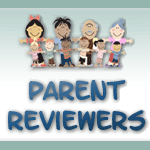Pinterest, a social bookmarking website, lets Internet surfers bookmark interesting websites by uploading pins to their virtual pin board. Each pin displays an image linked back to an URL for users to find the original web content.
How Pinterest Works
Pinterest users create boards on their user profile. Each board focuses on a specific topic or idea. When someone wants to post a pin to their board they either upload a new pin or “re-pin” someone else’s pins. These pins show to the pinner’s entire network on Pinterest and on Facebook and Twitter (depending on the user’s profile configuration.) When a pinner likes a pin but doesn’t want to re-post it, they “Like” the pin. Like activity shows on the pin to show how popular the content really is.
When a Pinterest user logs in, their feed page shows all their friends’ activity. You want many followers to get your pins in their daily Pinterest feed. Followers don’t have to follow all your boards. They can pick and choose which of your boards they follow. Make sure to create a nice organizational system to organize your pins.
Selling Products on Pinterest
Pins on Pinterest are categorized depending on the subject of the pin. At the top of Pinterest, a drop-down list shows all the categories available on Pinterest. Next to this drop-down list, a gift icon appears with a drop-down list of prices. This is an excellent way for Etsy store owners, online marketers and retailers to display their products for people wanting to buy on Pinterest. Users enter their price range for their product. A list of pins that fall within that price range shows on the next screen. The user finds a product. Clicks the image and is re-directed to the website to complete the original purchase.
Pinterest Marketing Benefits
Pinterest provides excellent marketing benefits for online marketers. Pinterest provides a way to back link articles, websites, blog posts and products. The more back links you get to your website, the higher your search engine results.
Pinterest links with Facebook and Twitter depending on the user’s configuration. When someone likes or re-pins your content, it shows up in their other social media feeds. This acts as a recommendation on your pin and gets traffic to your pin and website. A study by MarketProfs shows that Pinterest drives more referral traffic than LinkedIn, YouTube, Reddit and Google+ combined. You want the traffic going into Pinterest to leave to go to your website.
Elements of a Great Pin
Pinterest requirements state your image must be at least 80x80 pixels to show on Pinterest. They do not show hi-resolution photos. Make sure your photo is interesting and engaging to get people to click on it. The image is what drives traffic to your pin.
Studies show that images with watermarks are less likely to be re-pinned than those without. Watermarking prevents the theft of your images but also limits the exposure of your pins. You’ll need to weigh the pros and cons of using watermarks.
Always cite your source if you are pinning from the Internet. You need to attribute credit where it is due to avoid plagiarism and copyright issues.
Pinterest Website Integration
Pinterest created buttons to integrate your website with their social bookmarking site. They provide standard icons to link to your Pinterest profile for users to connect to your Pinterest account. They also provide a “Pin It” button to attach to each of your blog posts and products. When you add this button to your post, you increase the likelihood that users will pin your products to Pinterest. When it is simple to upload, they are more likely to upload your content.
Citations:
Benjamin Sawyer is an Internet marketing consultant and content writer for Long Island Divorce Lawyers law firm from New York. He is also a passionate blogger who often writes about Social media networks, sharing his experience in that field.


























































No comments:
Post a Comment
Please leave us some love...and have yourself a groovy day~!! Peaces...xoxo